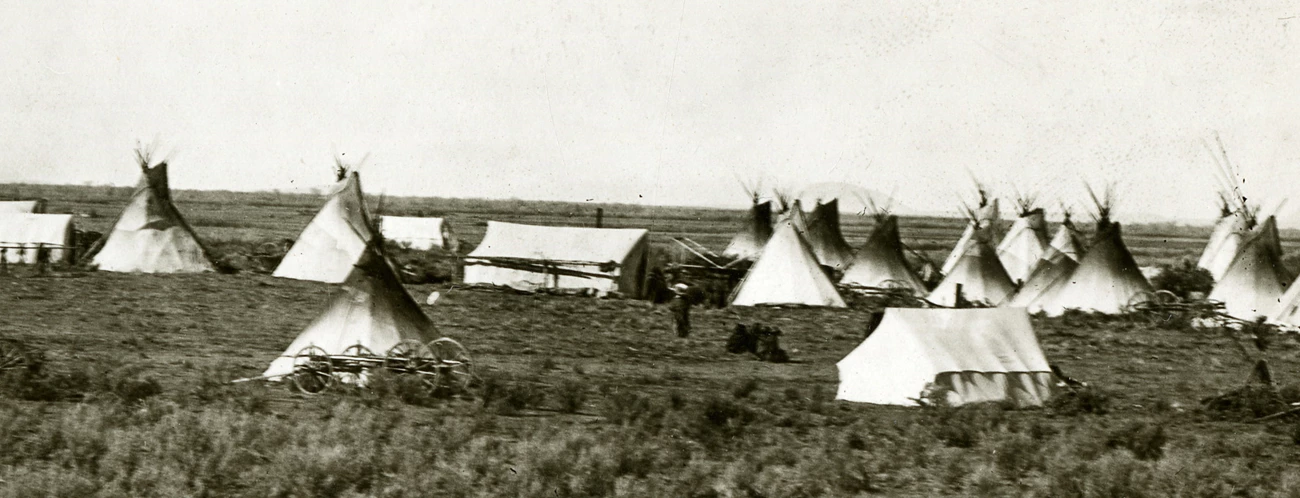As the massive ice sheets covering North America retreated at the end of the Pleistocene Epoch around 12,000 years ago, Native American groups moved through the Yellowstone region. Recent ice patch archeology suggests Native American peoples were moving across high altitudes in the Yellowstone region following game and other seasonal resources 10,000 years ago. As the area cooled during the Little Ice Age (mid-1400s to mid-1800s CE), some Native Americans adapted by moving in smaller groups and leaving the area during the coldest parts of the year.
Due to its proximity to the Great Basin, Great Plains, and Rocky Mountains, Yellowstone was an important crossroads in Native American travel and trade. Many groups passed through Yellowstone each year to access resources, conduct ceremonies, and follow animal migrations. Others such as the Tukudika band of Mountain Shoshone resided in Yellowstone year-round. Many ancient trails and trade routes, some still visible in the park today, were then used by European American trappers in the Yellowstone region in the early 1800s.
Due to its proximity to the Great Basin, Great Plains, and Rocky Mountains, Yellowstone was an important crossroads in Native American travel and trade. Many groups passed through Yellowstone each year to access resources, conduct ceremonies, and follow animal migrations. Others such as the Tukudika band of Mountain Shoshone resided in Yellowstone year-round. Many ancient trails and trade routes, some still visible in the park today, were then used by European American trappers in the Yellowstone region in the early 1800s.
-
 Shaft Fragments
Shaft FragmentsYellowstone National Park, YELL 210552
-
 Shaft straightener
Shaft straightenerYellowstone National Park, YELL 8699
-
 Map of the Bannock Trail
Map of the Bannock TrailYellowstone National Park
-
 Obsidian Cliff
Obsidian CliffYellowstone National Park, YELL 38408
-
 Cody Knife
Cody KnifeYellowstone National Park, YELL 66605
-
 Flaked Stone Tool (Biface)
Flaked Stone Tool (Biface)Yellowstone National Park, YELL 63126
-
 Map of the 1877 Flight of the Nez Perce
Map of the 1877 Flight of the Nez PerceYellowstone Spatial Analysis Center
-
 Associated Tribes Map
Associated Tribes MapYellowstone Spatial Analysis Center
-
 Nez Perce Appaloosa Horse Club Ride
Nez Perce Appaloosa Horse Club RideNational Park Service photograph
Last updated: June 6, 2024

